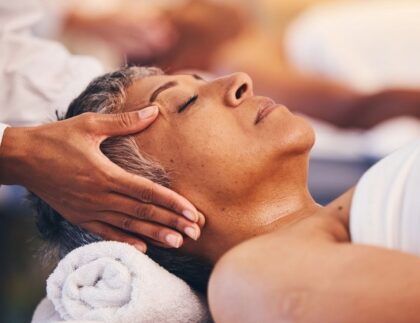
The Truth About Toxins and Massage Therapy Debunking Common Myths
Massage therapy is widely recognized for its numerous health benefits, including relaxation, pain relief, improved circulation, and stress reduction. However, there’s an ongoing debate about what toxins are released after a massage. This idea has been widely circulated, but it’s essential to separate facts from myths to understand what actually happens during a massage.
Table of Contents
ToggleThe Origins of the “Toxins” Myth in Massage Therapy
The concept that massages release toxins likely stems from the idea that massages stimulate the circulatory and lymphatic systems. It’s true that massage therapy can enhance blood flow and promote lymphatic drainage, both of which are important for removing waste products from the body. However, over time, misconceptions have led to exaggerated claims about "detoxification" that aren’t supported by science.
Myth vs. Fact: Do Massages Release Harmful Toxins?
One of the most common myths about massage therapy is that it releases harmful toxins trapped in muscles or tissues. This belief suggests that massages flush out these toxins, leaving you feeling healthier and rejuvenated. However, there’s little scientific evidence supporting the idea that toxins accumulate in muscles or that massages directly eliminate them.
Fact: Massages support your body’s natural processes, such as improved circulation and lymphatic drainage. These systems work to remove metabolic waste, and while massage doesn’t directly "release toxins," it helps improve the efficiency of these natural detoxification processes.
What Actually Happens During a Massage?
Massage therapy leads to several physiological changes that benefit overall health:
- Improved Blood Circulation
Massages stimulate blood flow, delivering oxygen and nutrients to tissues and muscles. This process helps remove metabolic waste products, such as carbon dioxide and lactic acid. - Lymphatic System Support
The lymphatic system plays a key role in removing waste and toxins from the body. Massages can help stimulate lymphatic flow, especially in areas where fluid tends to accumulate, such as the legs and feet. - Muscle Relaxation
By reducing muscle tension, massages promote better mobility and reduce the buildup of byproducts like lactic acid, which can accumulate after intense physical activity.
Debunking More Myths About Toxins and Massage
Let’s address a few more misconceptions surrounding what toxins are released after a massage:
- Myth 1: Drinking Water After a Massage Flushes Out Toxins
While staying hydrated is important, drinking water after a massage doesn’t specifically flush out toxins. It helps prevent dehydration, which can occur when fluid movement is stimulated by the massage. - Myth 2: Massages Detoxify Organs
Massages don’t directly affect organs like the liver or kidneys, which are responsible for detoxifying the body. These organs already perform an excellent job of eliminating harmful substances. - Myth 3: Feeling Sore After a Massage Means Toxins Are Released
Post-massage soreness is commonly attributed to toxins being released, but this is not the case. It’s more likely due to the pressure applied to muscles and tissues during the massage. Similar to delayed onset muscle soreness (DOMS) after exercise, this discomfort is temporary and unrelated to toxins.
The Role of Massage in Overall Wellness
While massages don’t "detoxify" the body in the traditional sense, they offer several benefits that support overall health and wellness:
- Stress Reduction
Massages help lower cortisol levels, reducing stress and supporting immune function, which indirectly helps the body’s detoxification processes. - Improved Sleep
Regular massage therapy can promote better sleep, allowing your body to repair and rejuvenate more effectively. - Enhanced Mobility
Reduced muscle tension improves mobility and posture, helping prevent long-term issues like chronic pain or stiffness.
How to Maximize the Benefits of Massage Therapy
To get the most out of your massage sessions, consider these tips:
- Stay Hydrated: Drink water before and after your massage to support overall health and hydration.
- Rest After Your Massage: Allow your body time to relax and recover, maximizing the benefits of the treatment.
- Maintain a Healthy Lifestyle: Regular exercise, a balanced diet, and sufficient sleep will enhance the effects of massage therapy.
- Communicate with Your Therapist: Be sure to let your therapist know about any areas of discomfort or specific goals for your session.
Conclusion: Focus on the Facts, Not the Myths
The myth that massages release toxins is largely unsupported by science. However, this doesn’t take away from the proven health benefits of massage therapy. By improving circulation, reducing stress, and supporting the lymphatic system, massage therapy helps your body function at its best. Instead of worrying about toxins being released, focus on how massages enhance your body’s natural processes and support your overall wellness.
When seeking massage therapy, always choose a qualified and experienced therapist to ensure you get the full range of benefits, such as relaxation, pain relief, and improved health. By focusing on the real science behind massage therapy, you’ll enjoy the maximum benefits of this ancient wellness practice.


